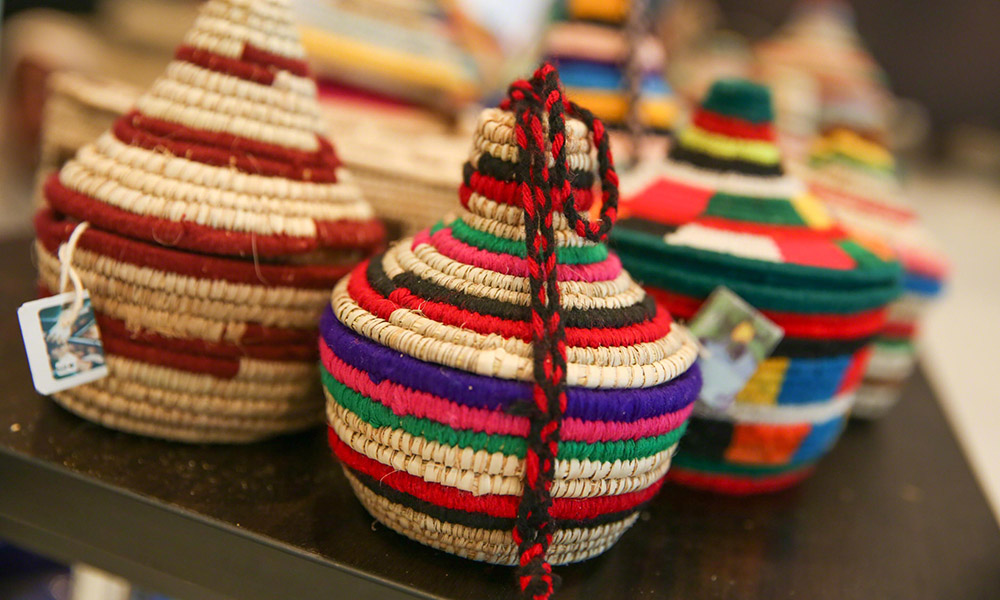Summary
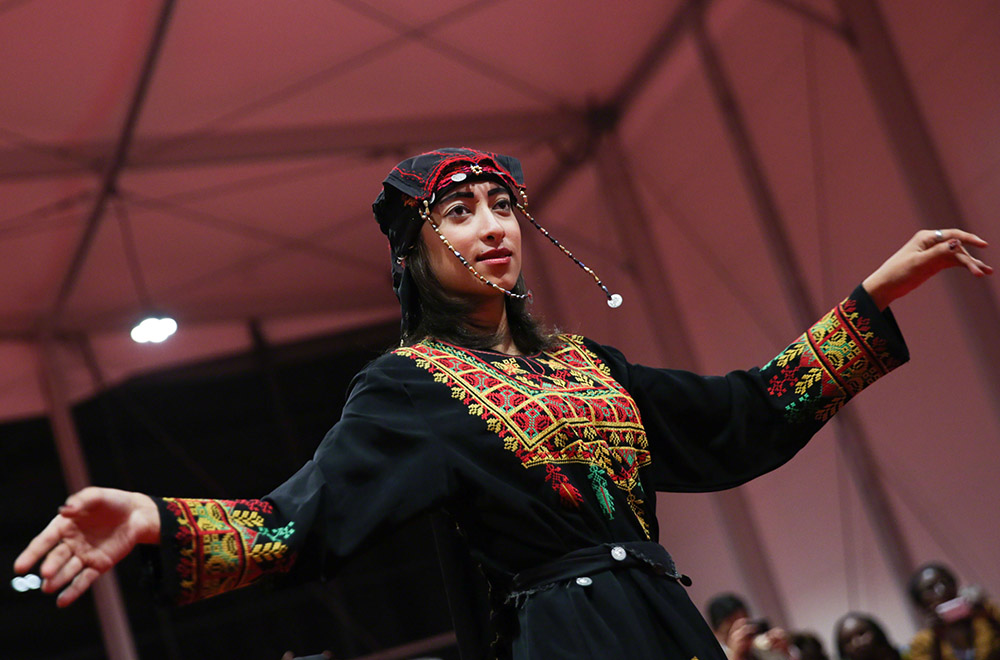
The following events were covered by IISD Reporting Services on Saturday, 24 November 2018:
Photos by IISD/ENB | Kiara Worth
For photo reprint permissions, please follow instructions at our Attribution Regulations for Meeting Photo Usage Page
Global Biosafety Clearing House Training Workshop for BCH National Focal Points and National Authorized Users
Presented by the UN Environment Programme - Global Environmental Facility (UNEP-GEF) Project for Sustainable Capacity Building for Effective Participation in the BCH (BCH III)
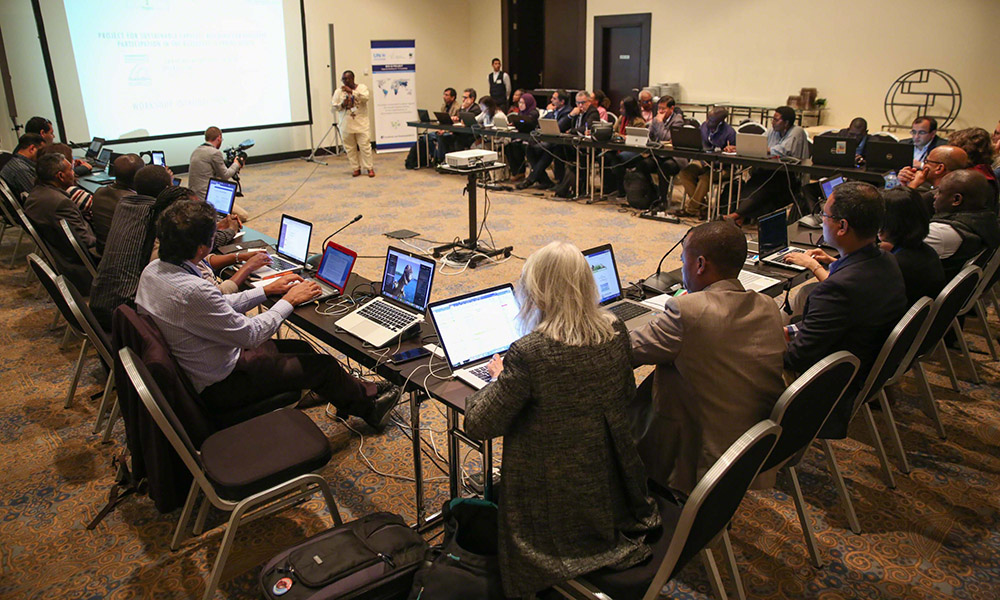
Posted by IISD Reporting Services on Saturday, 24 November 2018
This Training Workshop on Biosafety Clearing-House (BCH) Operations convened on 24 November 2018 in Sharm El-Sheikh, Egypt, on the margins of the ninth meeting of the Conference of the Parties serving as the meeting of the Parties to the Cartagena Protocol on Biosafety (COP/MOP 9).
The workshop aimed to facilitate the exchange of experiences among BCH national focal points and national authorized users and to strengthen regional and sub-regional cooperation on the BCH, while reviewing compliance on BCH obligations under the Cartagena Protocol. Thirty-two participants attended the workshop from various countries around the globe.
Frédéric Vogel, CBD Secretariat, introduced the workshop and spoke about the process of merging and updating the 3 Clearing-Houses (CHM, BCH and ABSCH) in facilitating the integration of the Convention and its Protocols. He emphasized that the BCH belongs to users of the system and, therefore, depends on users’ recommendations for improvement.
Alex Owusu-Biney, UNEP-GEF Portfolio Manager for Biosafety, stressed that a “good database depends on quality data,” noting that poor results will come from incomplete data. He said that the workshop should be viewed as a “training of trainers” to mainstream the utility of the BCH for national and regional stakeholders. He also underscored that the BCH is an information resource and can help in sharing lessons on improving biosafety.
Ernesto Ocampo Edye, UNEP and Catholic University, Uruguay, explained that the training would take place through short presentations and demonstrations; interactive modules, small group discussions; and practical exercises and simulations.
Rami Abdel Malik, UNEP, emphasized that the overall objectives of BCH-III are to: provide support to eligible Parties to sustain and build capacity for effective participation in the BCH in line with relevant COP/MOP decisions; capitalize on the training and networking mechanisms created during BCH-II; be country driven; and incentivize government, industry and civil society to appropriately use local, regional and global BCH databases on biosafety information. He described the five components of the BCH-III project, involving:
- global and sub-regional networking and knowledge sharing for effective BCH management;
- mainstreaming BCH education packages in all six UN languages;
- strengthening BCH regional advisor systems as a direct support to Parties;
- assisting national decision makers and key stakeholders in enhancing their understanding of what should be placed in the BCH; and
- enhancing expertise and awareness of the BCH in coordination with UNEP-GEF Biosafety Initiatives.
Ossama Abdelkawy, UNEP, and Atomic Energy Authority, Egypt, and Edye, facilitated a training module on the Cartagena Protocol that included: descriptions of the purpose and functioning of the BCH; various categories of information available on the BCH; discussions on information Parties are required to post; and when they are required to make this information available on the BCH. The lessons in this module introduced participants to:
- the application of the Cartagena Protocol and the BCH as an implementation tool;
- institutional and administrative arrangements; and
- working procedures and applications of the Protocol, including Advance Informed Agreement procedures, and the first intentional transboundary movement of a Living Modified Organism (LMO).
The trainees subsequently participated in a short quiz using an Immediate Feedback Assessment Technique, aimed at testing their knowledge on various aspects of the Protocol and on Parties' obligations.
Ossama Abdelkawy, UNEP and Atomic Energy Authority, Egypt, presented the background and key issues relevant to the Cartagena Protocol, the BCH and the Liabilty and Redress Protocol. He defined LMOs as possessing novel combinations of genetic material obtained through the use of modern biotechnology. He stressed that the Cartagena Protocol applies to transboundary movement, transit, handling and use of all LMOs that may have adverse effects on the conservation and sustainable use of biodiversity, taking into account risks to human health. He described various LMO categories, linking them to appropriate procedures under the Protocol. On unintentional transboundary movements of LMOs, he described the process of LMO notification, the need to consult between transboundary Parties to determine appropriate responses, and response measures by competent administrative authorities in accordance with the Nagoya-Kuala Lumpur Supplementary Protocol on Liability and Redress to the Cartagena Protocol on Biosafety. In conclusion, he said the BCH, inter alia: maintains data on activities involving LMOs and operators; offers a mechanism for notifying and consulting with affected or potentially-affected states in the event of incidents; informs operators of their obligations; provides appropriate response measures in case of incidents of damage to biodiversity; and promotes public awareness and education on damage to biodiversity resulting from LMOs.
Edye then demonstrated use of the BCH website, and facilitated a practical BCH information-finding exercise.
Edye facilitated a practical session aimed at encouraging participants to explore decisions that importers or exporters would take in shipping genetically modified organisms (GMOs). Using an example of GMO cotton imports to Mexico from the US, participants explored: country decisions on LMOs under the Advance Informed Agreement; LMOs for food, feed or processing; risk assessment reports on adverse effects on biodiversity and human life; and other decisions and declarations.
After a demonstration by Edye, participants also learned how to enter information in the BCH, including how to nominate and manage national authorized users.
Abdelkawy demonstrated data entry of risk assessments into the BCH Central Portal. He showed the fields requiring input, including the title, date and scope of the assessment. He underlined that the scope referred to different categories, depending on whether the risk assessment is for containment, introduction to the environment, or direct use as food, as feed or for processing. The risk assessment itself, he said, can either be uploaded as a file or linked to a website.
In the afternoon, using the BCH training website, Edye demonstrated how to interact between national authorized units and national focal points to exchange and validate information on national records for LMOs. Participants then paired up to check the status of records and to validate them.
Participants subsequently explored approaches for registering information, including on Advance Informed Agreements and LMOs for food, feed or processing, and in reviewing decisions for existing records on the BCH III Project Virtual Learning Environment platform.
Abdelkawy also discussed mandatory information required from Parties, which includes the designation of a national focal points, designation of one or more competent national authorities, and the identification of the point of contact to receive notification in case of unintentional transboundary movement of an LMO.
He presented data on compliance levels in publishing mandatory information across all regions of project countries and noted very low compliance with the publishing of information, particularly on the nomination of contact points for article 17 of the Cartagena Protocol.
Participants, thereafter, carried out a practical exercise to check entries for mandatory information and their accuracy. They also examined laws of regulation for country regulatory systems. Participants’ efforts in this exercise enabled updating of information for countries whose national focal points were present at the meeting.
Blaise Fonseca, CBD Secretariat, described new features of the BCH website, including a map showing Party status, and an overview of national records and LMOs. He also presented the “manage” section of the webpage where national focal points can submit records and manage preferences, including on requested records and basic actions such as deleting, editing or duplicating records. He emphasized the user-friendly nature of the new features, particularly on notifications, email alerts, subscriptions, saved searches, improved export data, and workflow reminders to BCH Focal Points.
Edye presented two tools created to help Parties share national BCH information. He described Hermes, an online content management tool created by the CBD Secretariat, which enables Parties to create a website by retrieving information in real time from the BCH. Presenting the BCH Ajax Plug-in tool, Edye said Parties would be able to retrieve elements of the BCH central portal for display on other websites.
Edye provided a summary on available BCH training materials thorough the BCH Virtual Learning Environment. He highlighted manuals, interactive modules, reference guides, discussions points with answer keys, and announcement and events.
Abdel Malik thanked the organizers of the workshop and all participants, reiterating the importance of the workshop in training a cadre of “biosafety ambassadors” to make informed decisions through effective biosafety reporting.
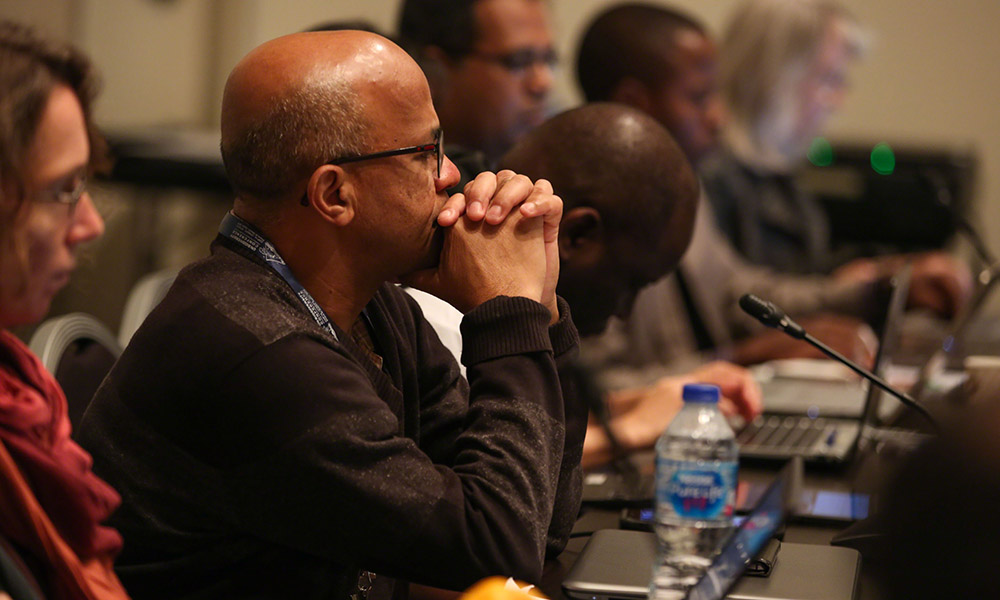
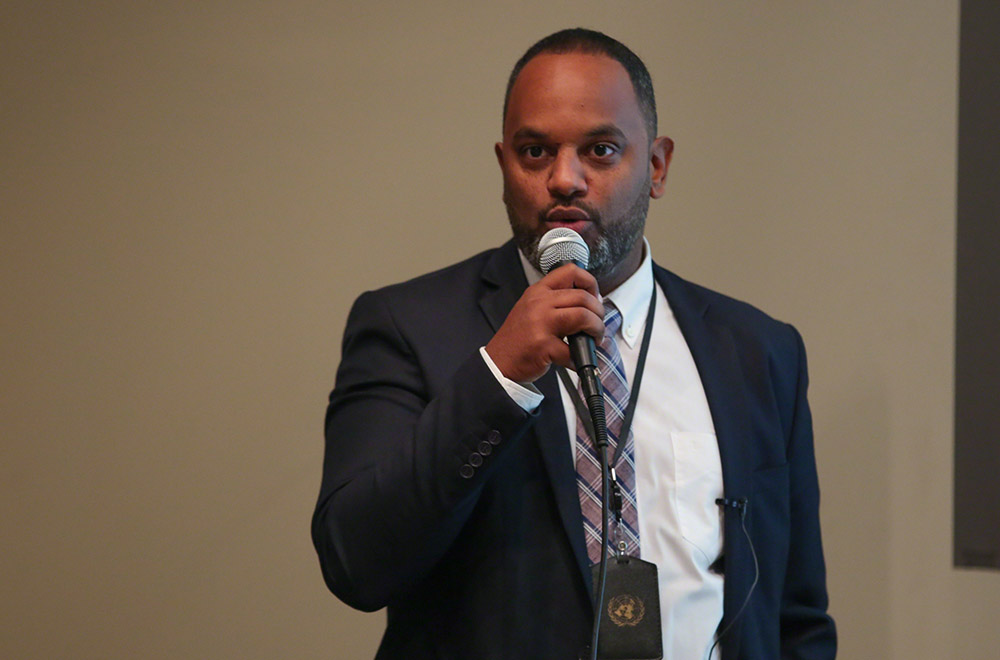

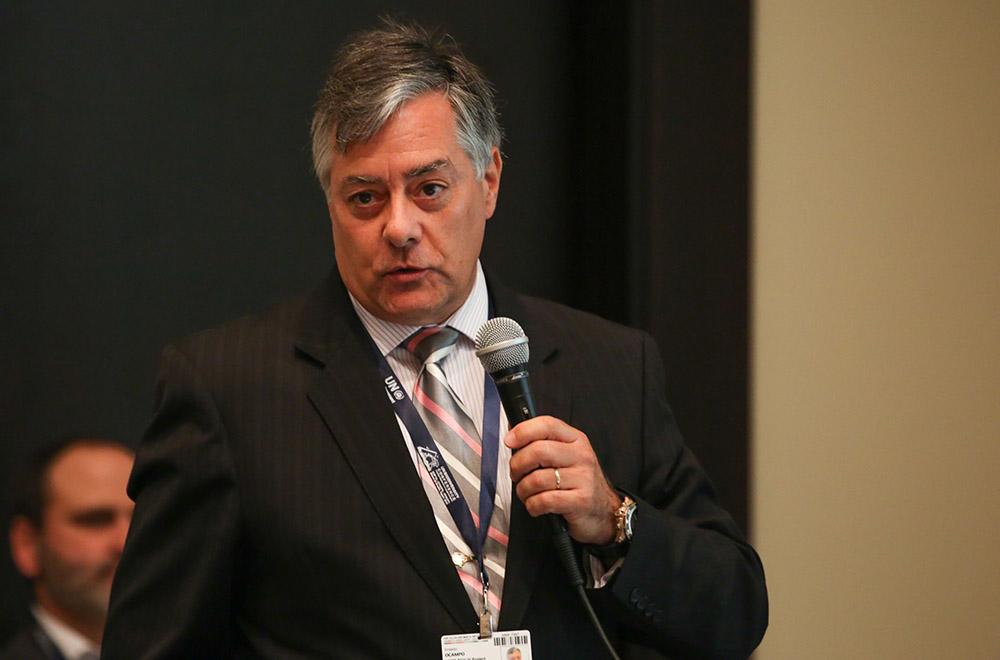
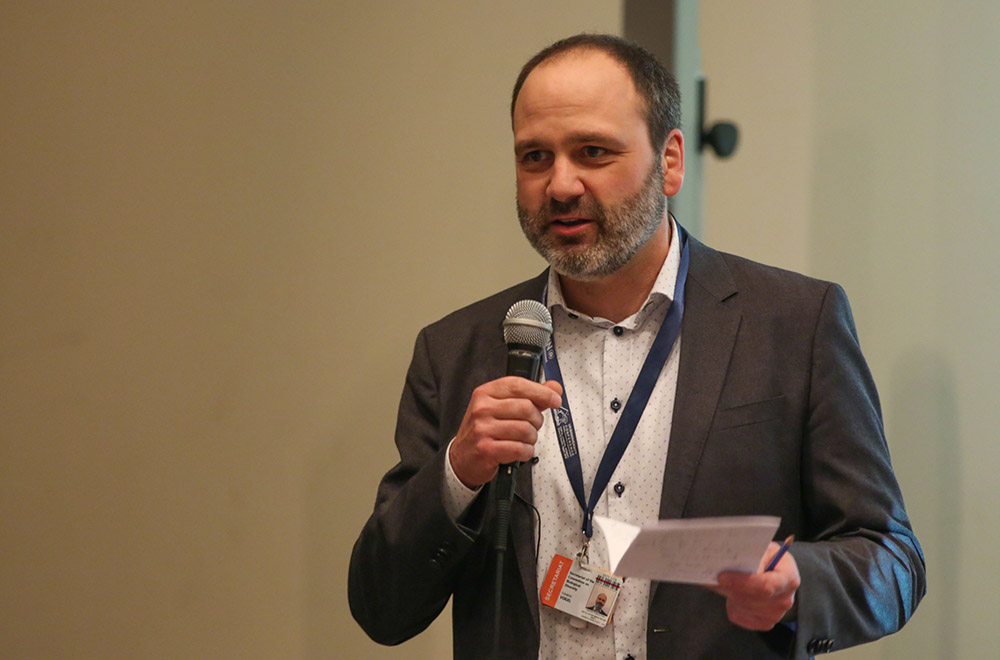
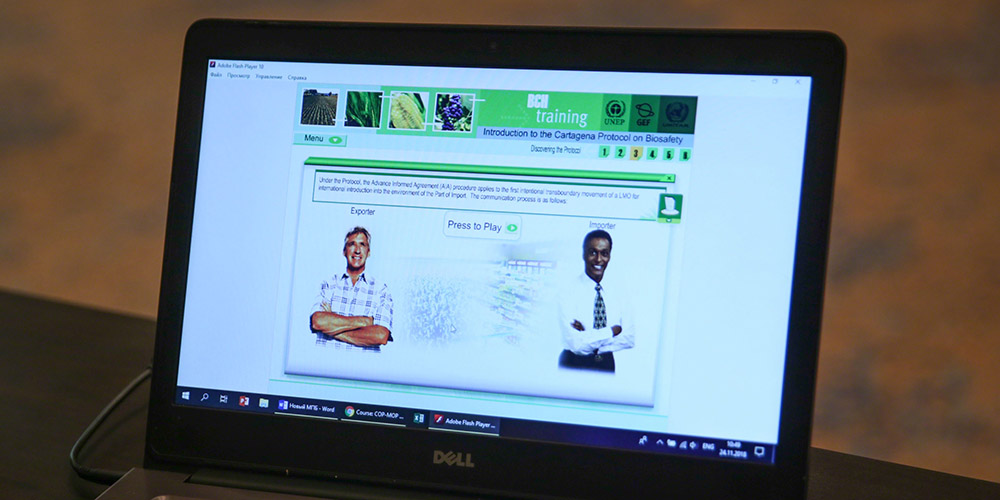
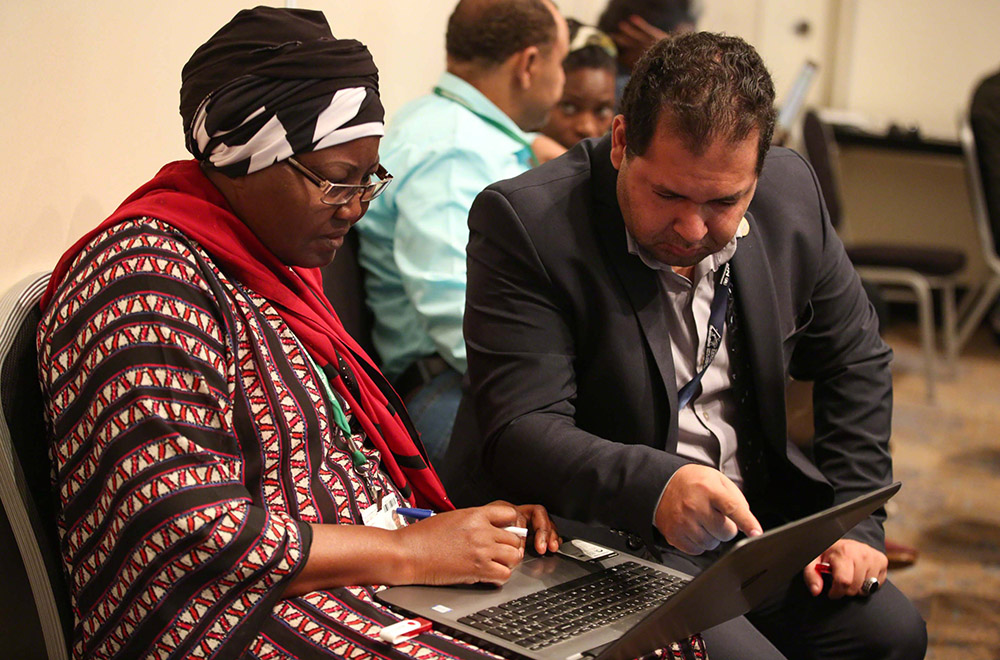
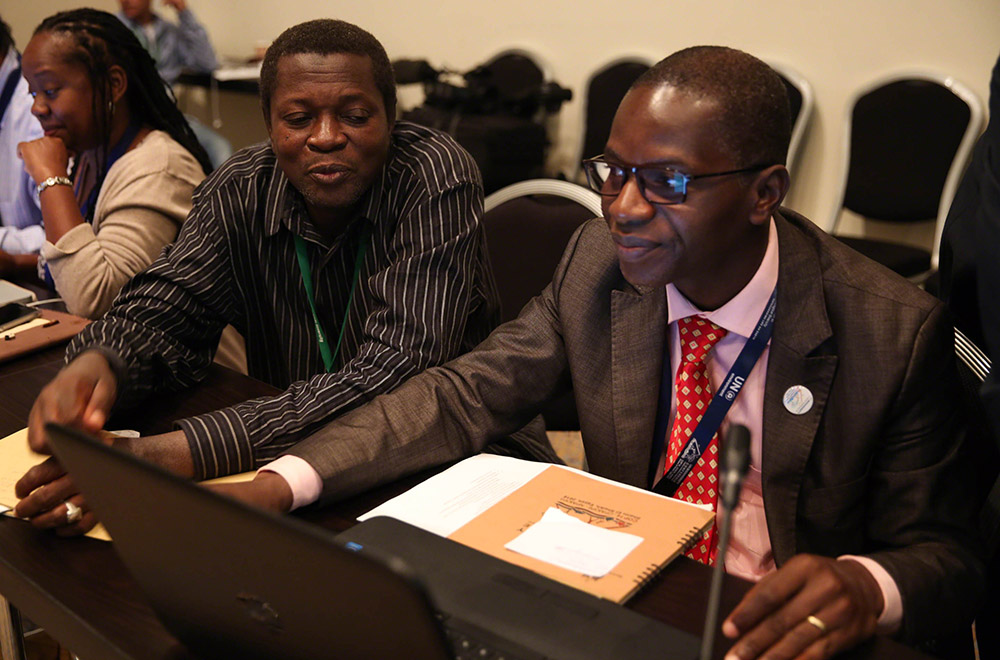
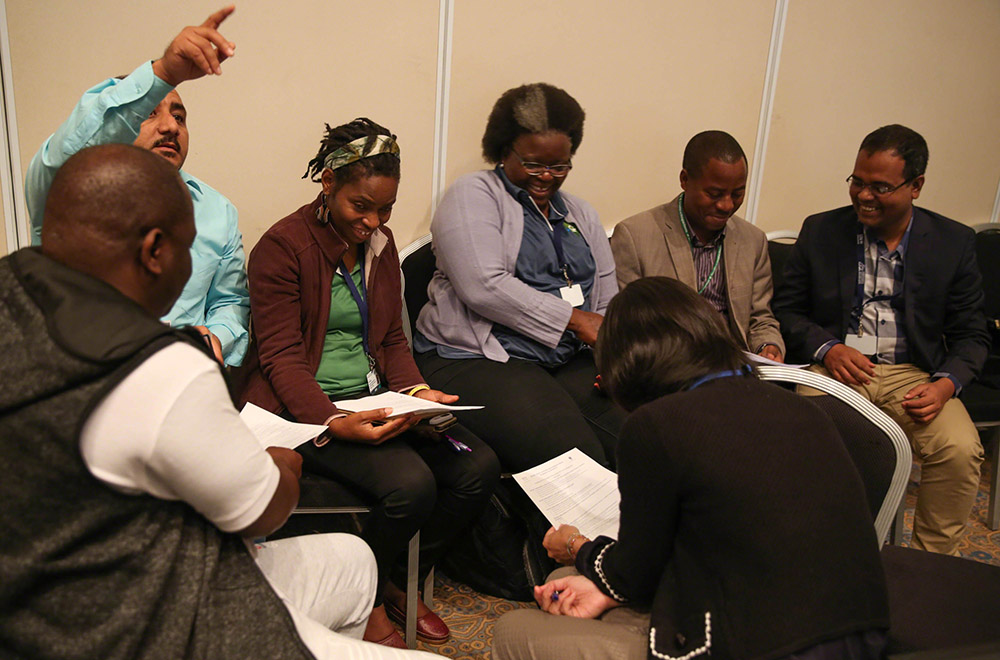
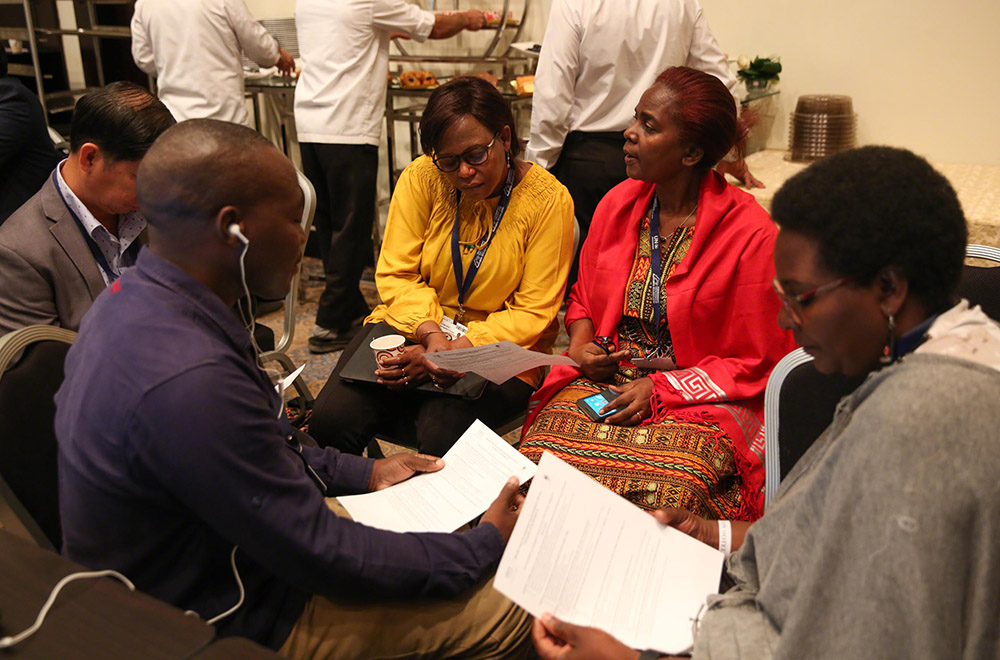
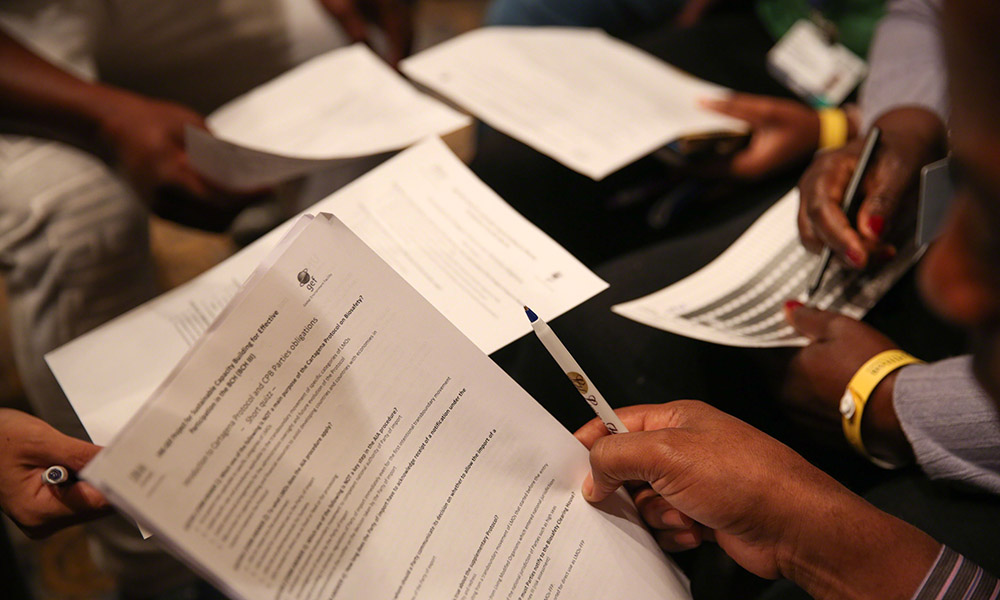

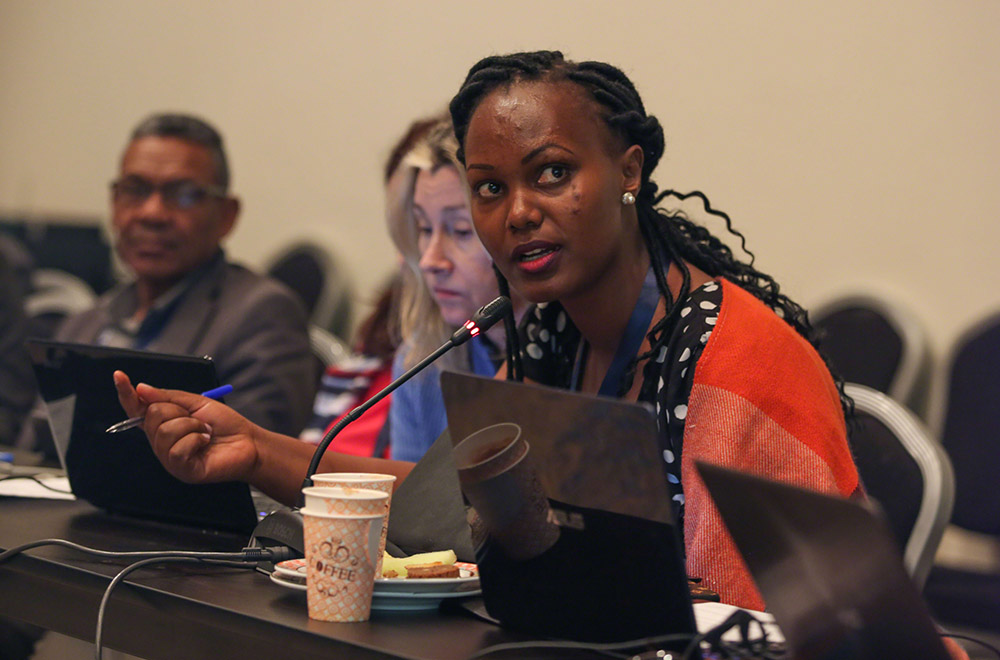
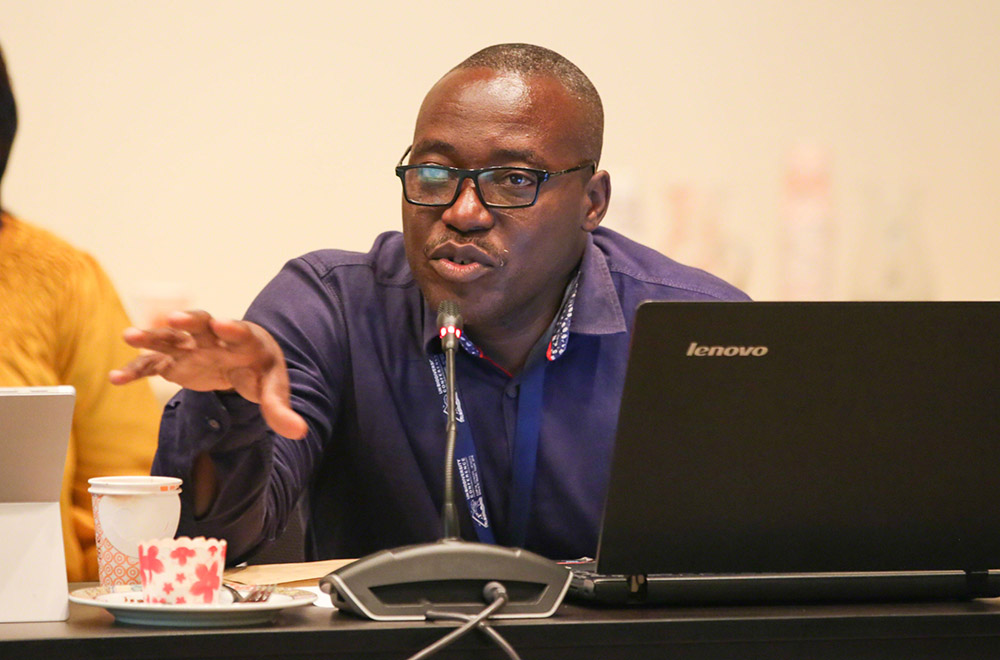
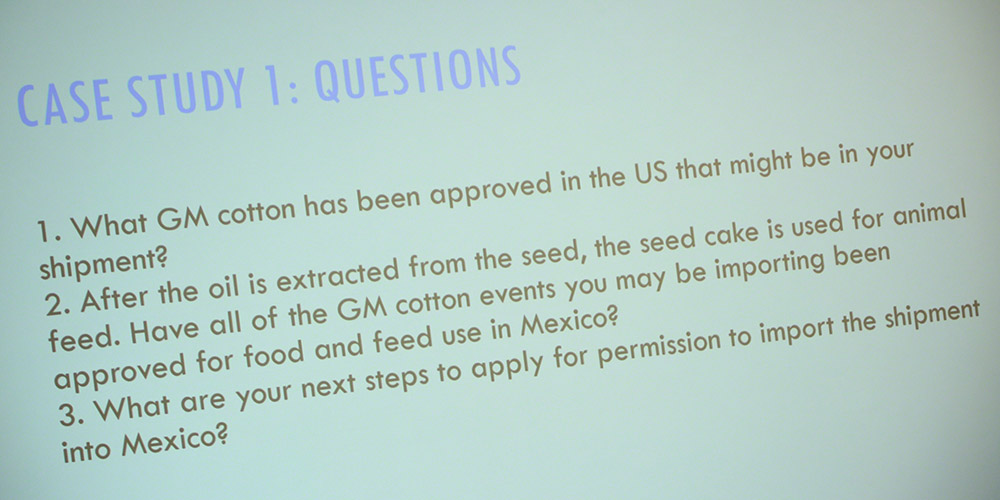
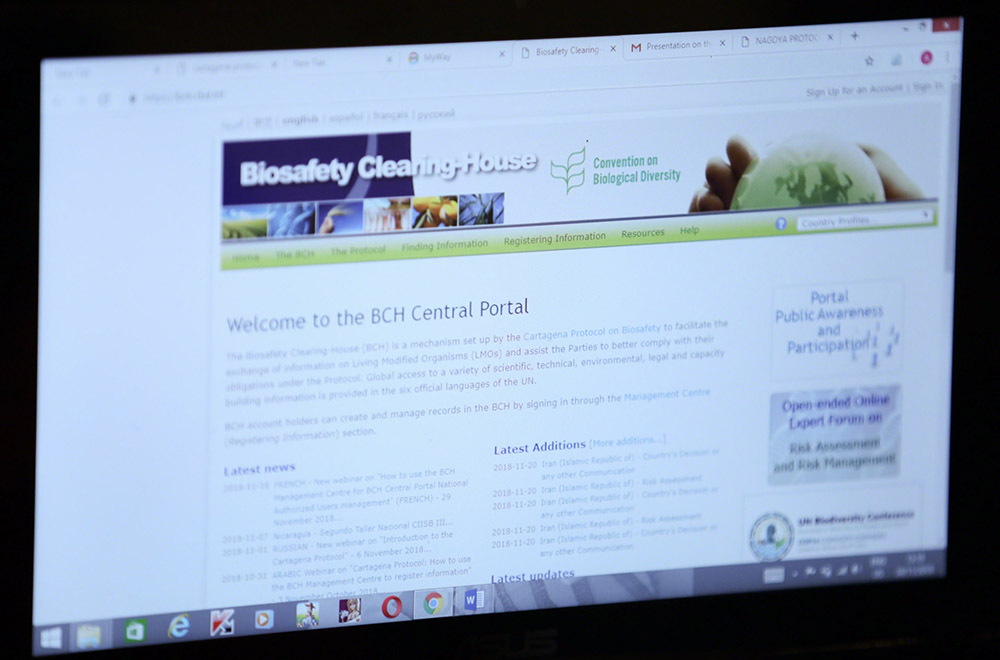


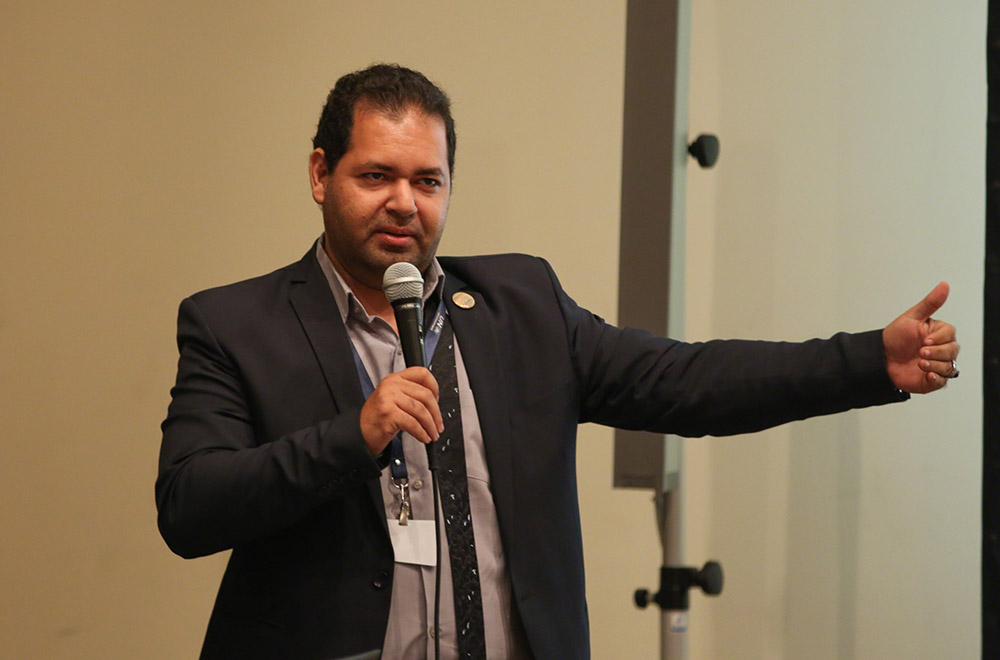
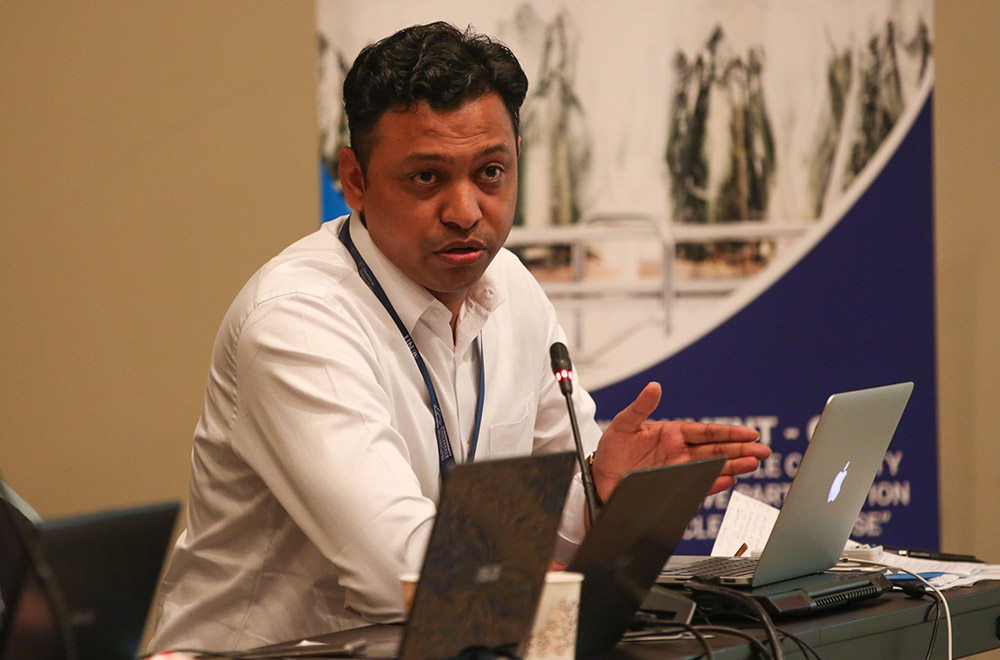
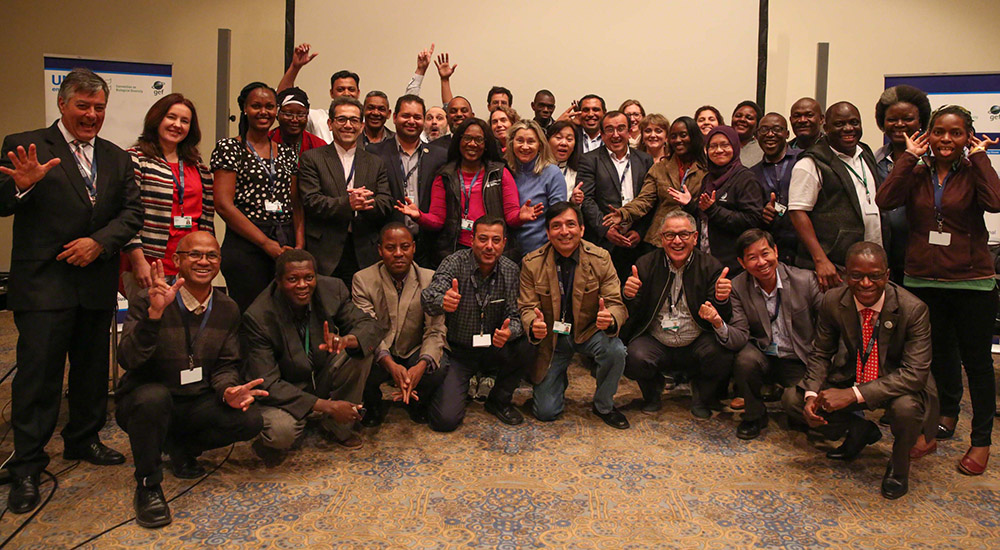
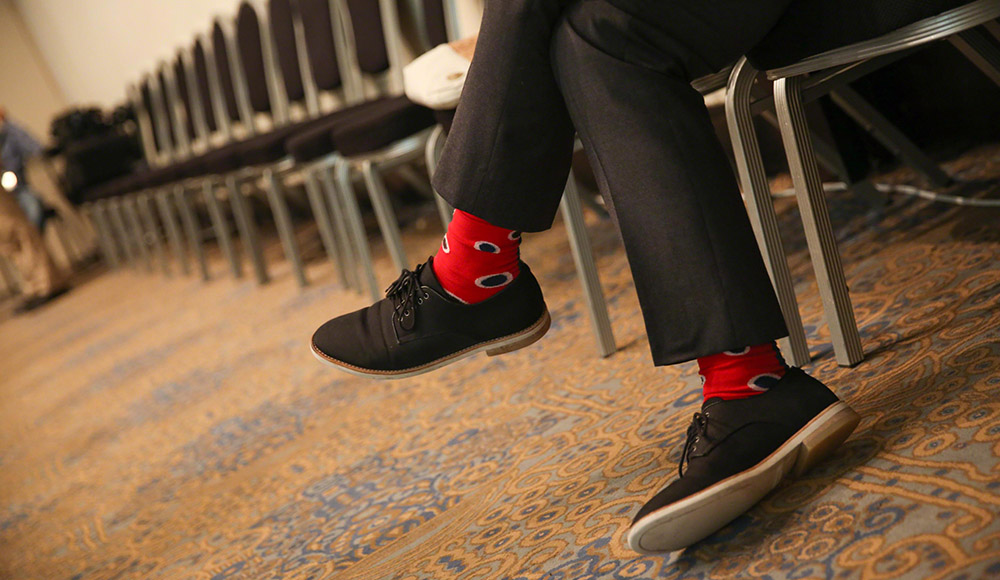
CONTACT
Rami Abdel Malik | rami.abdel-malik@unep.org
MORE INFORMATION
Cultural Night-Reception: 20th Indigenous Women’s Biodiversity Network and Small Grant Programme 25th Anniversary
Presented by the Global Environment Facility (GEF) - UN Development Programme (UNDP) Small Grants Programme (SGP) and the Indigenous Women’s Biodiversity Network (IWBN), with support from the Secretariat of the Convention on Biological Diversity (CBD)
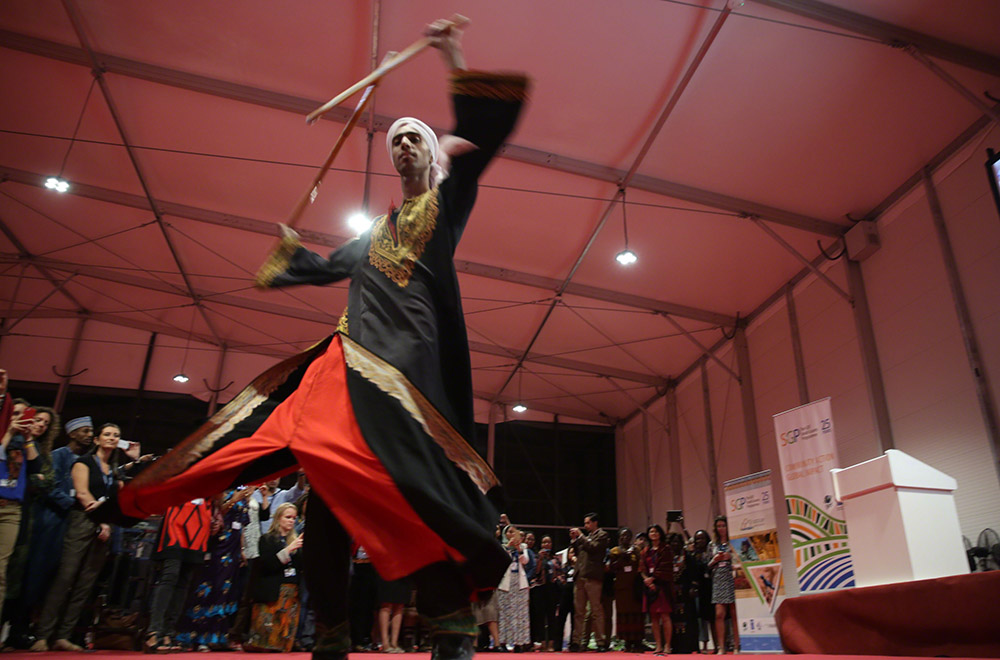
During the opening of the event, Lucy Mulenkei, IWBN, noted that the SGP has been working with local communities around the globe for many years. She said that IWBN encourages indigenous communities to work with the Network and commended the SGP’s support to the IWBN.
Florina López Miró, IWBN, recalled the success of the Network, which was created 20 years ago and evolved based on “learning, support and solidarity.” She noted that, since 1998, this organization has evolved through partnerships, recalling the importance of the SGP in supporting indigenous women at the global level.
Yoko Watanabe, GEF SGP, noted that the GEF SGP, over the last 25 years, has supported over 22,000 community-based projects in 125 countries working with civil society, youth, indigenous peoples and women’s groups. She highlighted that the SGP specializes in working with local communities on global environmental issues, while addressing local livelihood issues. She underscored SGP accomplishments, including the fact that 20% of projects involved indigenous peoples, of which 33% was with women’s initiatives, and 96% of projects completed were gender responsive. She concluded expressing that SGP is committed to scaling up local initiatives, while being people-oriented.
Emad Adly, SGP National Coordinator in Egypt, noted his involvement with the SGP since its inception, and expressed his satisfaction with the SGP's significant progress. He urged the various indigenous groups visiting Egypt to reach out to local Egyptian NGOs to create acting links, once the UN Biodiversity Conference 2018 concludes.
John Scott, CBD Secretariat, said that indigenous women have a capital role within the work of the CBD Secretariat. He praised the importance of indigenous women on a local and regional level, underscoring the goal of the Secretariat to bridge nature and culture.
Ramiro Batzin, International Indigenous Forum on Biodiversity (IIFB), stated that women hold traditional and historical knowledge, noting the importance of recognizing women’s rights.
A SGP short introductory video was screened. Delegates then witnessed the launch of the ‘Local Action, Global Impact - 25 Years of Supporting Local Communities as Environmental Stewards,’ which showcases the achievements of the SGP and its more than 21,000 projects carried out by
civil society organizations and local communities.
A second book launch took place to celebrate the release of ‘Indigenous Knowledge for Climate Change Assessment and Adaptation,’ published by UN Educational, Scientific and Cultural Organization (UNESCO). Of interest to policymakers, scientists and indigenous peoples, the book addresses climate science, policy and adaption. With chapters written by indigenous peoples, scientists and development experts, it showcases solutions for a changing climate based on traditional knowledge that has the potential to be globally scalable.
During this book launch, Nigel Crawhall, UNESCO, congratulated all participants of the Nature and Culture Summit, stating the importance of mobilizing support for indigenous knowledge in the search for solutions for a changing climate.
The ceremony proceeded with speeches from the book's co-editors.
Minnie Degawan, an indigenous Kankanaey-Igorot from the Cordillera, the Philippines, noted UNESCO’s call for abstracts from indigenous knowledge in 2010 and declared that indigenous communities “must get out of their comfort zones” and further engage with governments.
Jen Rubis, UNESCO and a Dayak from Sarawak, Malaysia, described the book as a “fantastic” journey, saying it was only possible due to relevant partnerships, notably the one with the Intergovernmental Panel on Climate Change.
Several cultural performances occurred throughout the night, highlighting the art of Egyptian, Russian and Sami people. Edith Bastidas, SGP Indigenous Peoples Fellow, also invited people to join traditional dances from Latin America.
The celebration concluded with the handover of several awards from IWBN to organizations that support its work, including the Japan Biodiversity Fund, the ABS Initiative, and the Governments of Mexico, Guatemala, Germany and New Zealand.
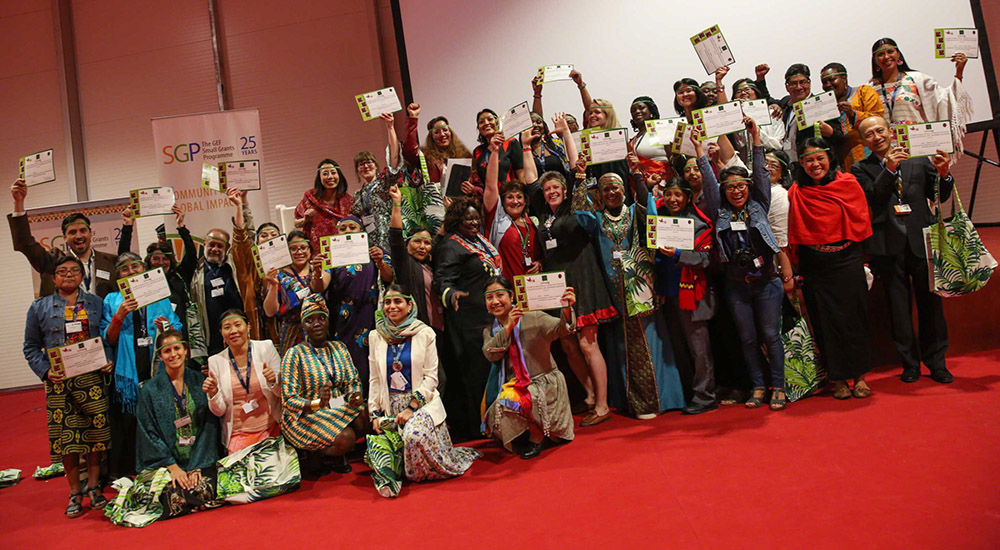
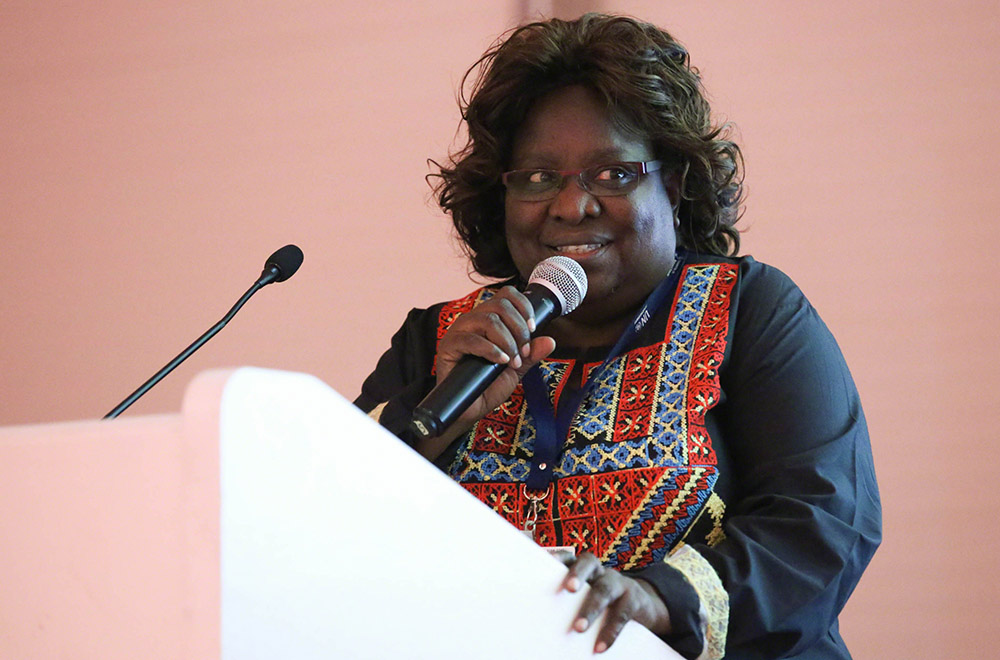
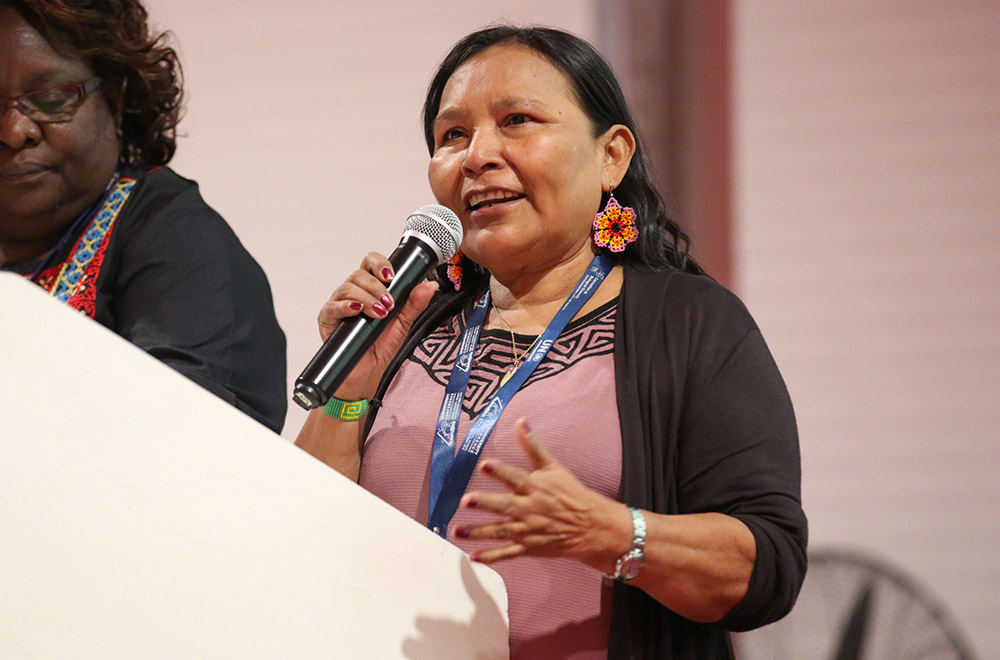
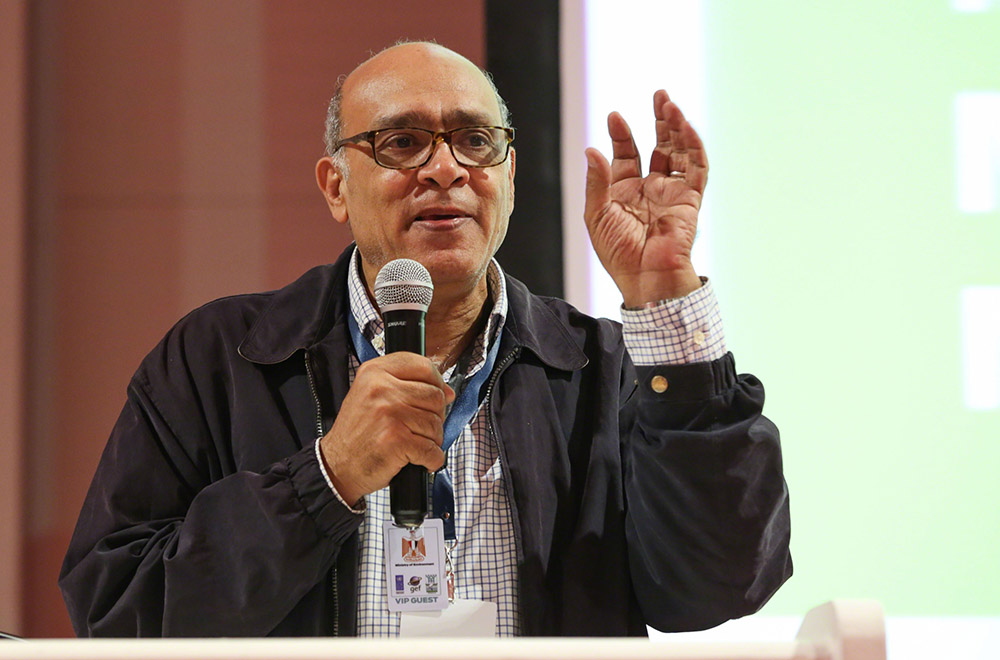

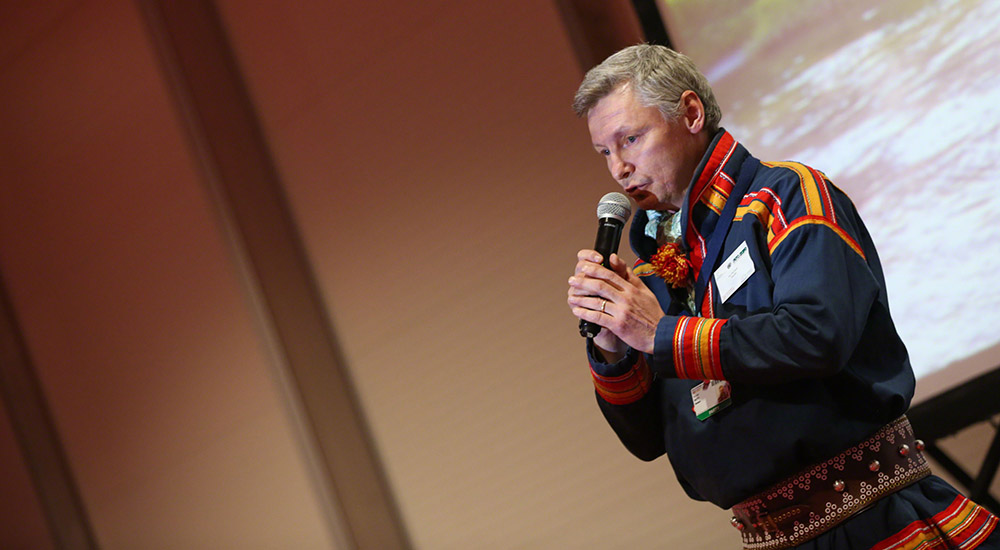
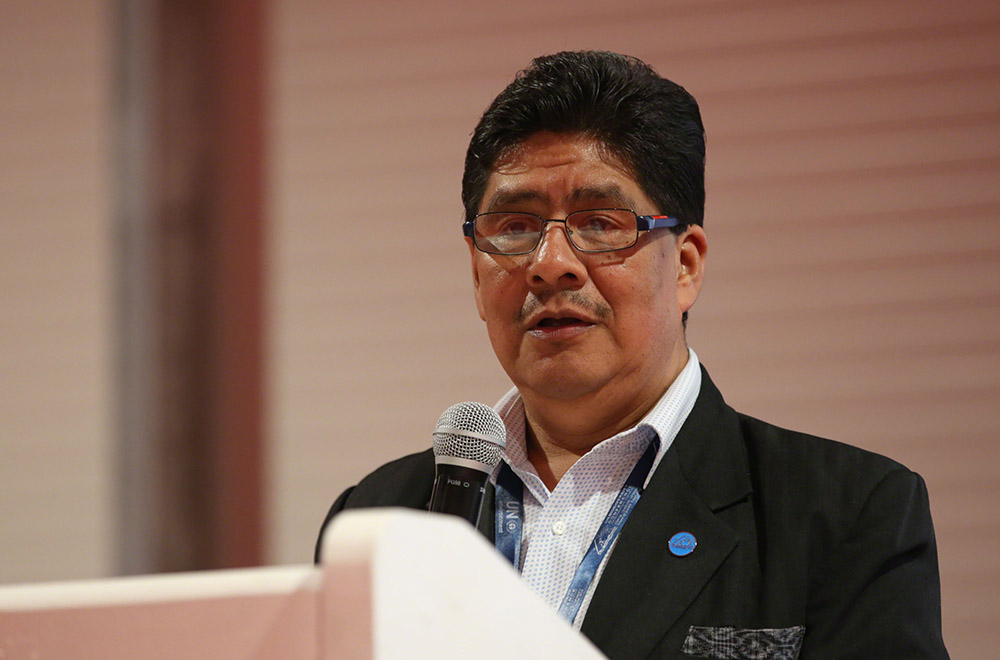
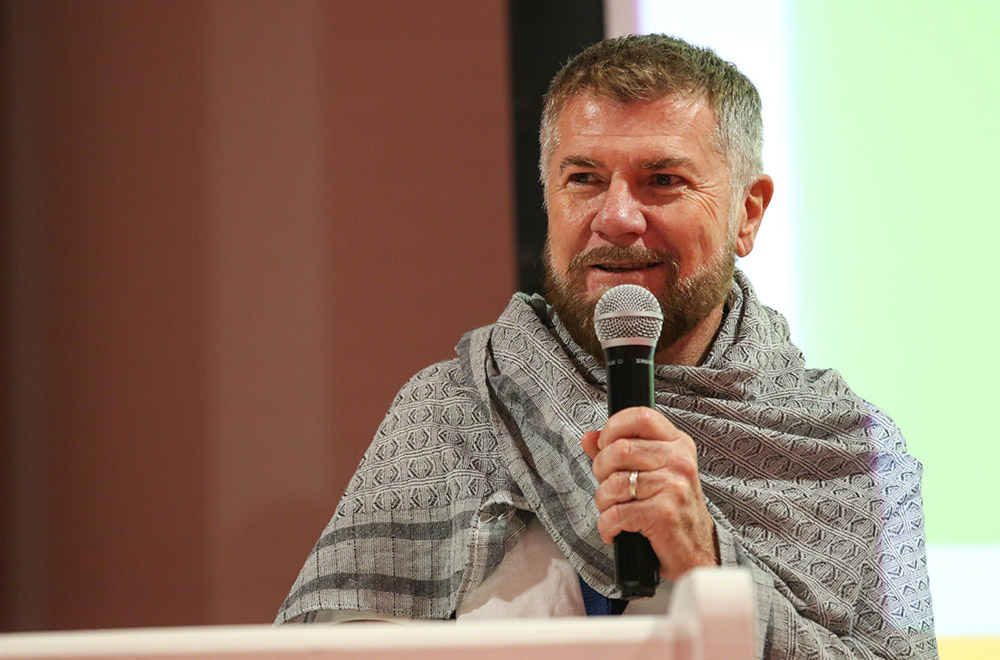
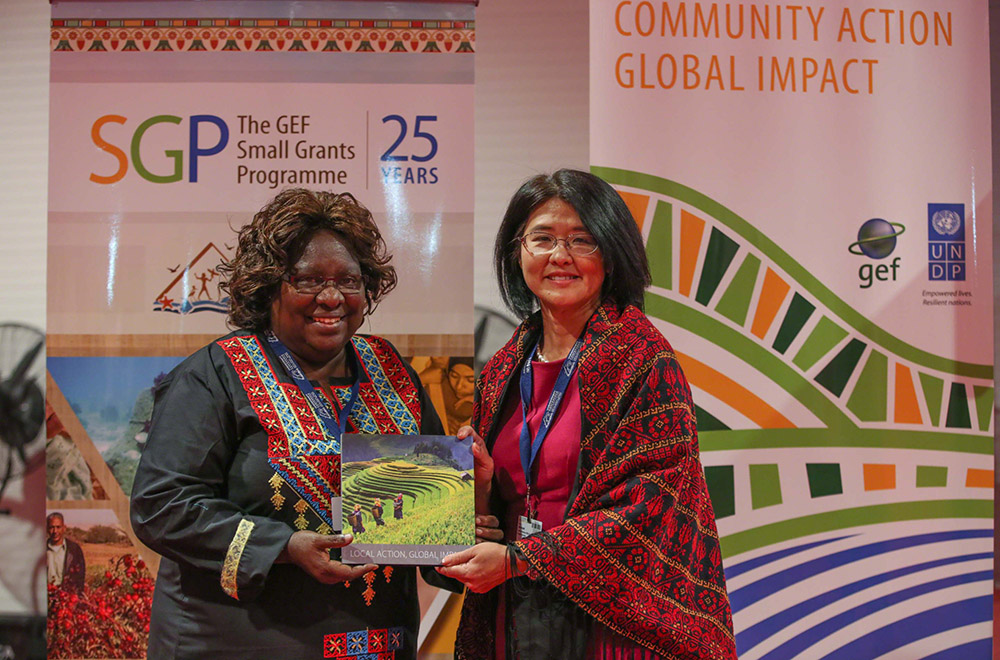


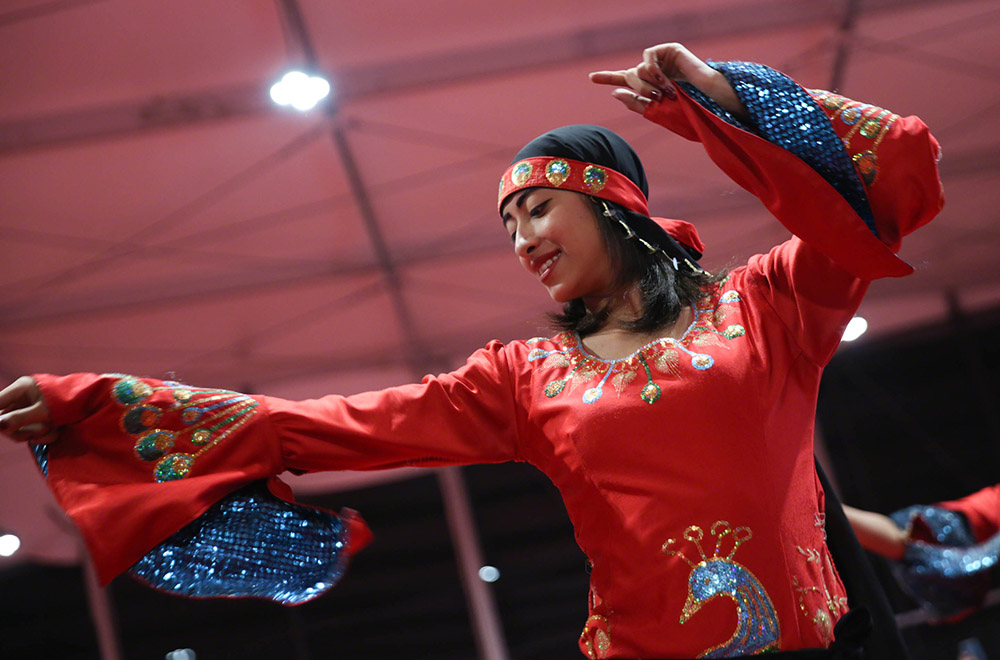

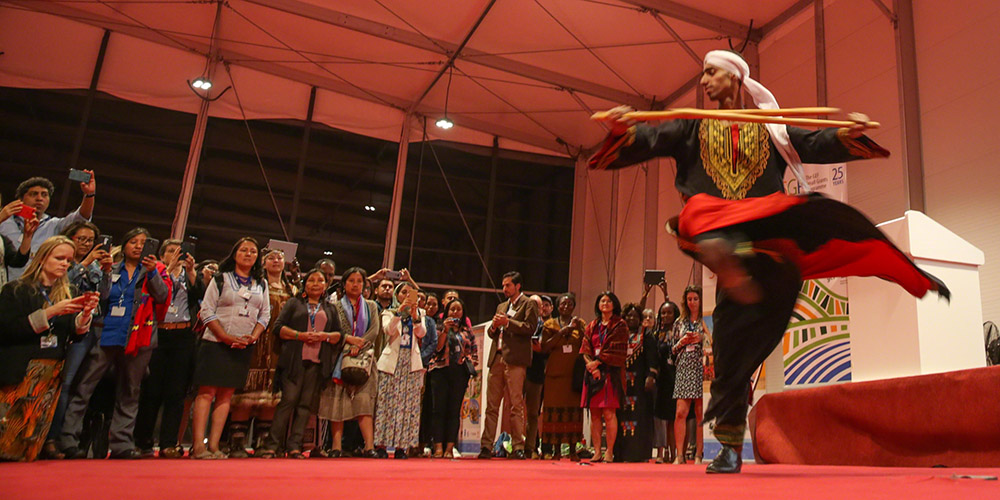
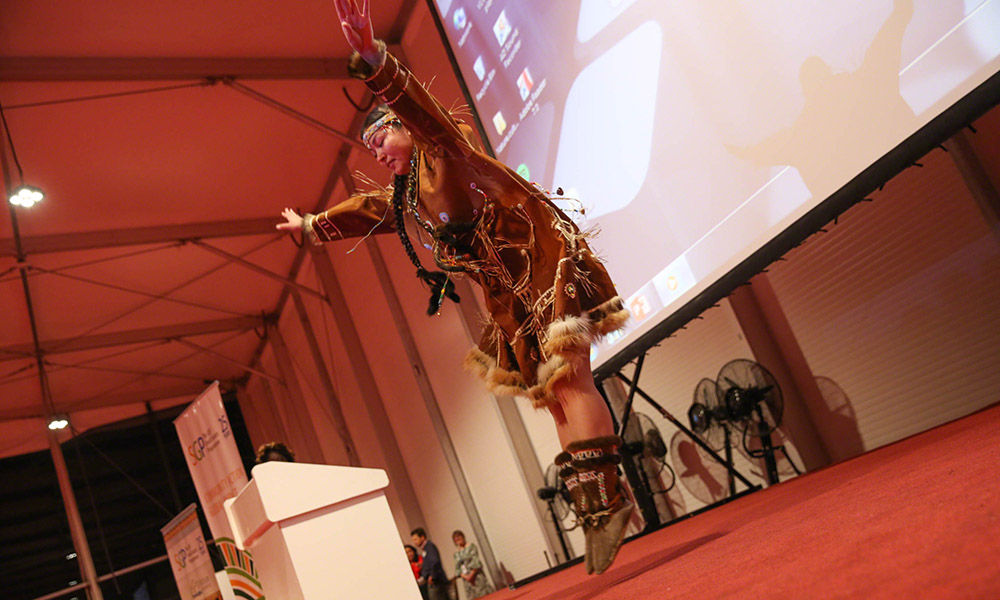

Around the Venue
